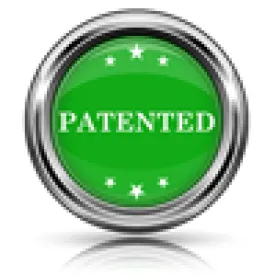Takeaway: If a petitioner relies upon information from the challenged patent to support its obviousness contentions, the petitioner must establish that such information would have been known by a person of ordinary skill in the art and not just by the inventors.
In its Decision, the Board denied institution of inter partes review, finding that Petitioner did not establish a reasonable likelihood of prevailing with respect to any challenged claim. The ‘134 patent relates to “a hybrid vehicle with an internal combustion engine, a traction motor, a starter motor, and a battery bank, all controlled by a microprocessor.”
The Board first addressed the question of claim construction, noting that unexpired patent claims are given their “broadest reasonable construction in light of the specification of the patent.” The Board indicated that only the term “maximum DC voltage” needed an express construction. Patent Owner proposed that the term refers to a voltage under load rather than a nominal voltage that is not under load. Although Petitioner did not explicitly construe the term, its declaration from Dr. Stein was in agreement with Patent Owner’s proposal. The Board agreed with Patent Owner’s proposed definition.
The Board then turned to the asserted grounds of unpatentability, first analyzing those grounds which depended upon the Ehsani prior art reference. As the Board noted, “[i]n each of the proposed challenges, Petitioner relies on Ehsani to teach the ‘wherein’ limitation of independent claims 1 and 58,” which requires “a maximum DC voltage to current supplied to be at least 2.5.” After considering the evidence in the record, the Board found that Petitioner did not make “a sufficient showing that Ehsani teaches a maximum DC voltage to current supplied to be at least 2.5, or that that ratio would have been obvious to a person of ordinary skill in the art.”
In particular, Petitioner acknowledged that Ehsani does not disclose specific numeric ratios, but relied upon its expert declaration to demonstrate that one of ordinary skill in the art would have recognized that the description in Ehsani “would lead to two different ratios of DC voltage to current supplied.” The first ratio calculated by Petitioner’s expert was based upon the disclosure of a nominal voltage in Ehsani, which the Board held to be irrelevant because the claimed “maximum DC voltage” excludes a nominal voltage. The second ratio calculated by Petitioner’s expert similarly failed to persuade the Board. In this regard, Petitioner’s expert based the calculation of the second ratio upon parameters found in the disclosure of the challenged ’134 patent. The Board agreed with Patent Owner’s argument that “the information contained in the ’134 patent has not been shown by Petitioner to be information that would have been known by a person of ordinary skill in the art, as opposed to information known only to the inventors of the ’134 patent.” Therefore, the Board found that Petitioner failed to establish that Ehsani discloses the claimed ratio required by all of the challenged claims.
Finally, the Board addressed Patent Owner’s Motion to Seal the unredacted copy of its Preliminary Response. Because the Board did not rely upon the information Patent Owner sought to seal, the Motion was dismissed as moot.
Ford Motor Company v. Paice LLC & The Abell Foundation, Inc., IPR2014-00852 Paper 11: Decision Denying Institution of Inter Partes Review
Dated: November 20, 2014
Patent: 7,455,134 B2
Before: Sally C. Medley, Kalyan K. Deshpande, and Carl M. DeFranco
Written by: Medley
Related Proceedings: Paice, LLC v. Ford Motor Company, No. 1-14-cv-00492 (D. Md.); IPR2014-00568



 />i
/>i

